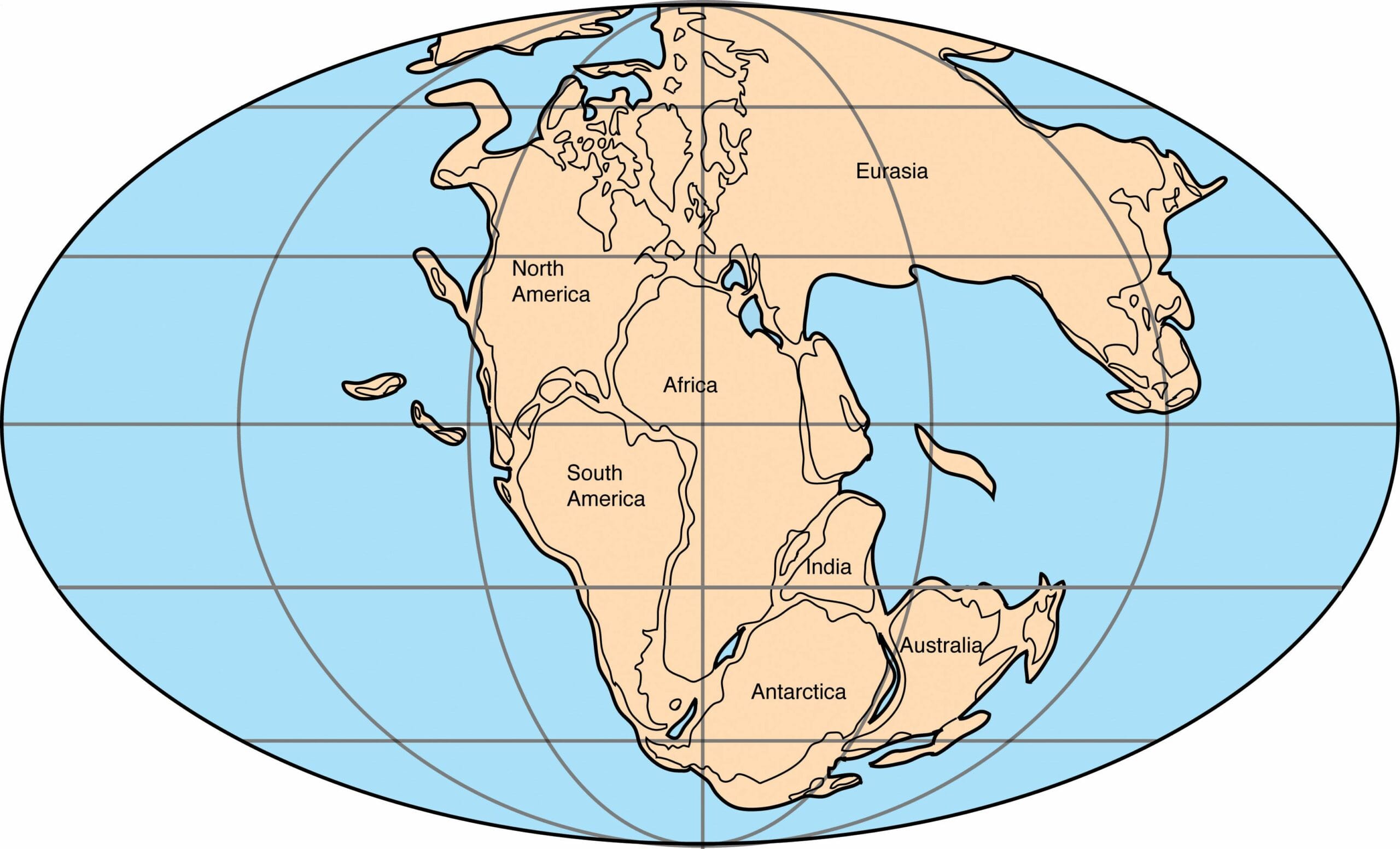Imagine stepping back in time to a world utterly different from our own, where continents drifted together to form a colossal supercontinent known as Pangaea. At its core lay the Central Pangean Mountains, a majestic range that towered over the landscape like ancient giants. Join us on an unforgettable journey to uncover the secrets of these lost mountains – their formation, their influence on the planet’s climate and environment, and the remnants that still whisper tales of their grandeur today.
Echoes of Giants: Unveiling the Central Pangean Mountains
Imagine a time long before our familiar continents, when Earth was dominated by the supercontinent Pangaea. Now, picture a colossal mountain range, potentially even mightier than the Himalayas, rising from its very heart. These were the Central Pangean Mountains, giants of a bygone era whose fingerprints we can still trace today.
These mountains weren’t sculpted overnight. Their story began with a continental clash of epic proportions. Picture two massive landmasses, Euramerica and Gondwana, drifting across the Earth’s surface for millions of years until they finally collided. This slow-motion collision forced the land upwards, giving birth to a chain of mountains that stretched across the supercontinent.
But even mountains aren’t immune to the relentless forces of nature. Over eons, wind, rain, and possibly even ice, gradually wore down these towering peaks. Imagine rivers carving deep valleys and glaciers slowly grinding down the rock, reshaping the landscape over millennia.
The influence of the Central Pangean Mountains extended far beyond their imposing physical presence. They played a crucial role in shaping Earth’s climate, acting as giant weather makers. Their sheer size and height likely disrupted air currents, potentially creating a monsoon-like environment with abundant rainfall. This constant moisture nurtured lush vegetation, which eventually transformed into the vast coal deposits we rely on today.
Interestingly, some evidence suggests that glaciers may have existed even on these equatorial peaks. Imagine a world where the heart of the supercontinent, bathed in tropical sun, was capped with icy peaks—a testament to the mountains’ incredible altitude and the unique atmospheric conditions of the time.
Sadly, the Central Pangean Mountains weren’t destined to last forever. As Pangaea itself began to break apart, the mountains fractured and were scattered across the globe like pieces of a giant jigsaw puzzle. But their remnants can still be seen today. The Appalachian Mountains, the Scottish Highlands, and perhaps even the Atlas Mountains – these could all be fragments of that ancient, mighty range.
Where Did the Central Pangean Mountains Go?
Since Pangaea no longer exists, it stands to reason that the Central Pangean Mountains aren’t simply sitting in the middle of nowhere. They’ve been broken down and scattered across the globe, leaving behind clues about their grand existence. Think of it like a puzzle that took millions of years to assemble and then got shaken apart, leaving us to piece it back together.
Here’s what we know: when the landmasses of Gondwana and Euramerica collided, they formed a mountain range potentially even more impressive than the Himalayas. As Pangaea started to break apart due to continental drift, these mountains eroded and fractured. But the remnants tell a fascinating story.
So where can you go to get a glimpse of these ancient wonders?
- The Appalachians in North America: These picturesque mountains stretching from Newfoundland to Alabama are probably the most significant chunk of the Central Pangean Mountains we have left.
- The Scottish Highlands: Those rugged peaks and dramatic valleys weren’t just put there for a postcard. They, too, whisper tales of the Central Pangean Mountains.
- The Anti-Atlas Mountains in Morocco: On the other side of the Atlantic, the Anti-Atlas Mountains in Morocco are another piece of the puzzle.
These remnants are like giant, open-air laboratories. They give us a peek into Earth’s tectonic past, the unbelievable forces that shaped our planet, and the fascinating interconnectedness of the continents.
What Happened to the Mountains of Pangaea?
The Central Pangean Mountains played a vital role in shaping Earth’s early climate and the evolution of life. So what happened to these majestic peaks?
Over millions of years, wind, rain, and ice chipped away at the mountains in a process called erosion. At the same time, deep beneath the Earth’s surface, tectonic plates shifted and moved. These plates are always pushing and pulling on each other, and over time, they ripped Pangaea apart, sending the continents drifting off in different directions.
As Pangaea broke up, the Central Pangean Mountains were also fractured and separated. Today, we find pieces of this ancient mountain range on different continents. The Appalachian Mountains, the Scottish Highlands, and even the Atlas Mountains in Morocco, are all considered fragments of this once-mighty range.
These scattered remnants, though much smaller than the original mountain range, are like clues left behind from a bygone era. By studying their rocks, their shape, and their position on the globe, geologists can piece together the story of the Central Pangean Mountains – how they formed, how tall they might have been, and what the world was like when they dominated the landscape.
Were the Appalachian Mountains and Scottish Highlands Once Connected?
Millions of years ago, a hiker might have been able to traverse a single, colossal mountain range that stretched from the present-day Appalachian Mountains to the Scottish Highlands. As the continents drifted apart, the Central Pangean Mountains were ripped apart.
Scientists believe that the Appalachian Mountains in North America and the Scottish Highlands in Europe were once part of the same mountain range. This idea is supported by geological evidence:
- Matching Rocks: The rocks in both the Appalachians and the Highlands are incredibly similar in age, structure, and composition.
- Fossil Similarities: Scientists have unearthed nearly identical fossilized plants and animals in both the Appalachians and the Highlands, suggesting that these regions were once close enough for the same species to roam freely.
This shared geological history isn’t just about rocks and fossils; it’s also about people. Many Scottish settlers felt a sense of familiarity when they arrived in the Appalachian Mountains, recognizing the rolling hills and rugged peaks as reminiscent of their homeland.
While we can’t travel back in time to see the Central Pangean Mountains in their full glory, the evidence left behind paints a vivid picture. It reminds us that our planet is an ever-changing puzzle and that even the most seemingly disparate pieces can have a shared history.
- Unveiling Bernhard Caesar Einstein’s Scientific Achievements: A Legacy in Engineering - July 15, 2025
- Uncover who is Jerry McSorley: CEO, Family Man, Business Success Story - July 15, 2025
- Discover Bernhard Caesar Einstein’s Scientific Contributions: Unveiling a Legacy Beyond Einstein - July 15, 2025















